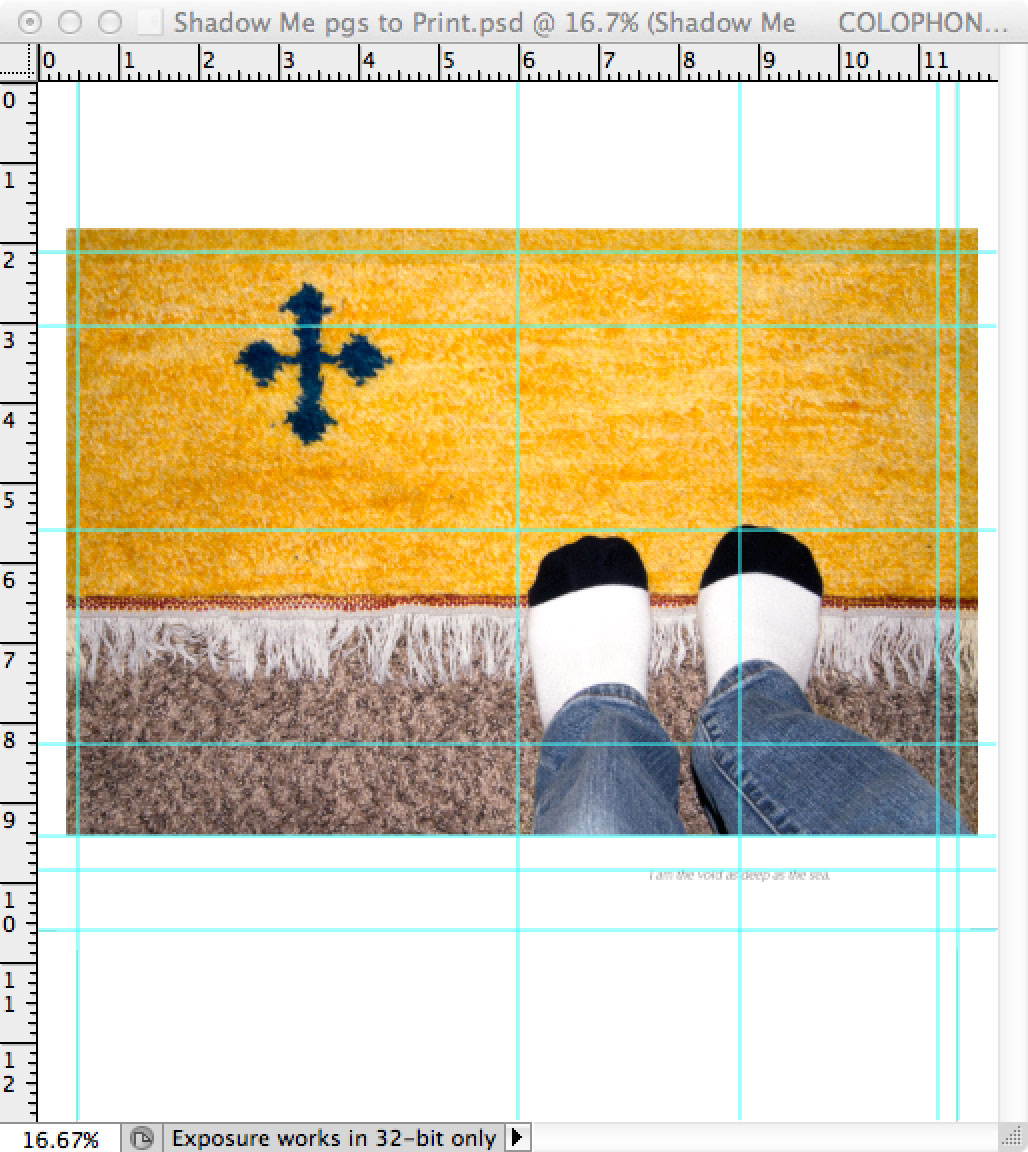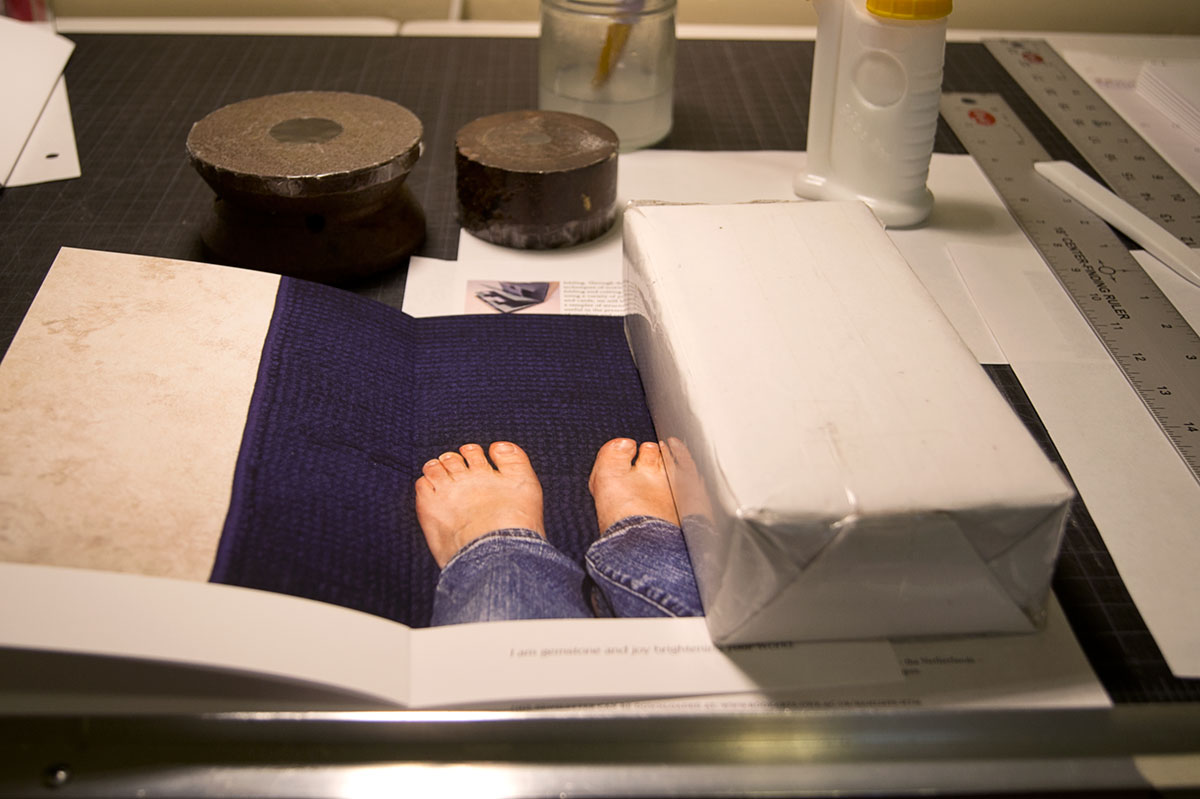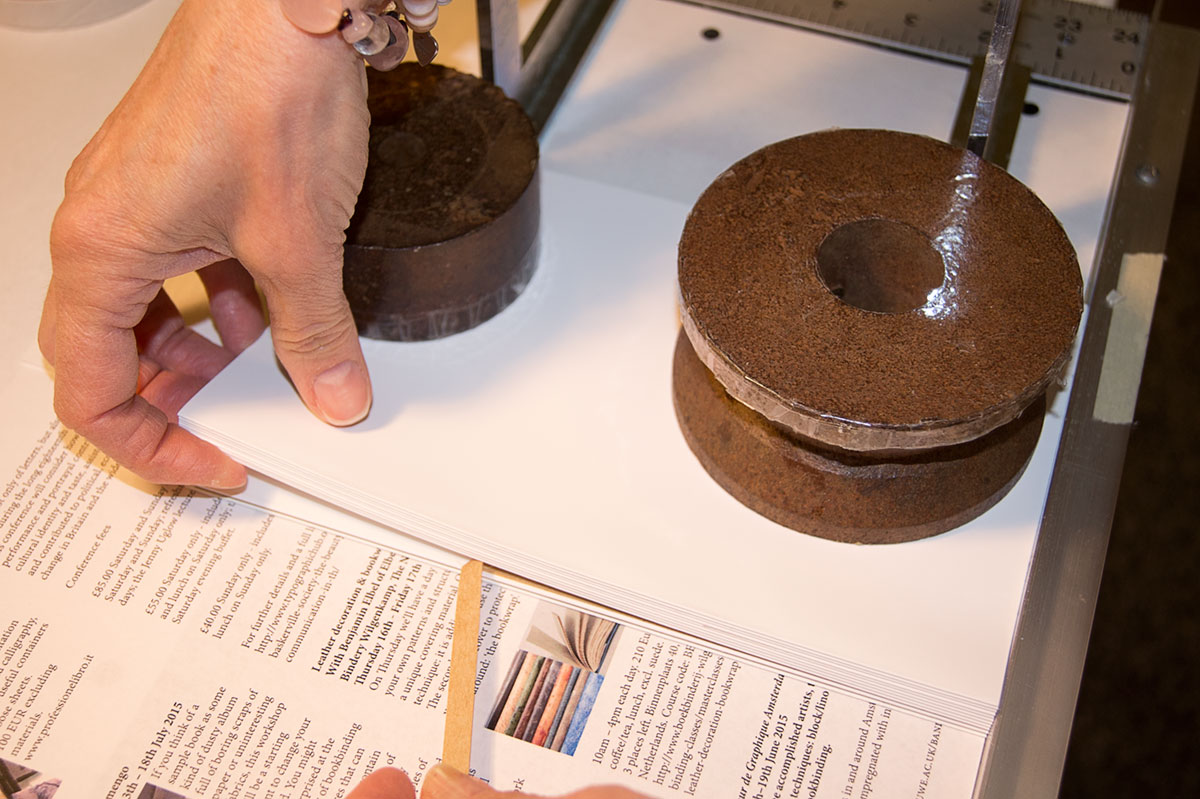This week, I’m taking you back to where we began our trip.
The first artist studio visit planned was Helen Hiebert in Colorado. After reaching Eagle-Vail, Colorado, we had issues with trailer brakes. We had to postpone our visit to Helen's Red Cliff Studio since it is high in the Rockies and one needs working brakes for that kind of terrain.
After a phone call to Helen, we all decided that it was best to take care of the situation and meet later on in the year. Helen was nice enough to let me into her studio via photos. Here is what I missed!
Helen is In the photo below, we see Helen in the—what she calls messy and full—dry area of her studio. Karen Kunc visited Helen’s studio to discuss and contemplate the book project in progress they were collaborating on.
© 2017 Helen Hiebert, the studio
One of my favourite artists’ books of Helen's is Pop-Up Hand Shadow Book published in 2012, as an edition of 50. This book features four illustrated animal hand shadows in a theatrical book structure. The animals are brought to life by the viewer playing with a mini flashlight (packaged with the book), casting shadows onto panels behind the pop-ups in the book. A verse about each animal, by poet Nora Robertson, appears on each page.
Every September, (the weekend after Labor Day), Helen hosts a retreat in her studio. Last year’s group, poses at the entrance to Helen’s studio, which is in the old Red Cliff School House. The theme for the 2017 retreat is Sculptural Books. The focus will be on creating pages, panels, and unusual book structures before, during, and after making paper.
© 2016 Helen Hiebert
© 2016 Helen Hiebert, a group photo from last year’s retreat watching Helen give a papermaking demo.
Helen also has a papermaking area in her studio where she creates her own paper.
© 2017 Helen Hiebert, a drying system is on the left and a press is in the back.
Helen teaches a fair amount. Here we can view Helen’s set-up for filming her next online class—Paper Lanterns. For anyone interested in this online class registration details will be on Helen’s site by August 1, 2017.
© 2017 Helen Hiebert, filming set-up
© 2017 Helen Hiebert, this pamphlet shows different parts of Helen’s business.
Interested in pop-ups? Read Helen’s book Playing With Pop-Ups and enjoy creating 20 projects to play with ranging from cards and books to buildings, graphic design pieces, and more.
Playing With Pop-Ups features a high-end gallery of artists, whose beautiful work will inspire you to make your own amazing paper art.
Having a peak in Helen’s studio was fun even in a virtual manner.
Let’s see who else I can visit.



























































